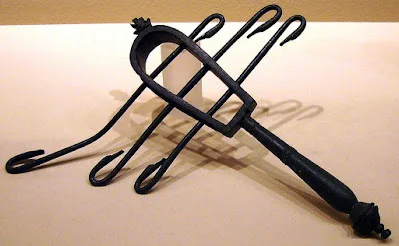In this exploration, we delve into the fascinating history of 10 ancient musical instruments that have left an indelible mark on music, influencing the design of instruments we know and love today. Music has been an integral part of human culture for millennia. While we often celebrate modern instruments and songs made with the use of VST plugins and virtual synthesizers, it's crucial NOT to forget the ancient musical treasures that paved the way for contemporary soundscapes and ritual music. Here are some of those brilliant instruments.
1. Sistrum
Origin: Ancient Egypt
History: The sistrum was a sacred percussion instrument used in religious rituals and celebrations. Its jingling sound was thought to appease the gods and drive away evil spirits.
Influence: The concept of shaking or rattling objects to produce sound influenced the development of various modern percussion instruments, including maracas and tambourines.
Origin: Ancient Egypt
History: The sistrum was a sacred percussion instrument used in religious rituals and celebrations. Its jingling sound was thought to appease the gods and drive away evil spirits.
2. Didgeridoo
Origin: Indigenous Australia
History: The didgeridoo is one of the world's oldest wind instruments, traditionally made from eucalyptus wood. It was used by Indigenous Australians for ceremonial and storytelling purposes.
Influence: The concept of using breath to produce sound directly inspired the development of modern brass and woodwind instruments, like the trumpet and saxophone.
3. Lyre
Origin: Indigenous Australia
History: The didgeridoo is one of the world's oldest wind instruments, traditionally made from eucalyptus wood. It was used by Indigenous Australians for ceremonial and storytelling purposes.
3. Lyre
Origin: Ancient Mesopotamia
History: The lyre was a stringed instrument with a wooden frame and strings made of gut or sinew. It was favoured by ancient Mesopotamian cultures and played a significant role in their music.
Influence: The lyre's design and stringed concept influenced the development of modern string instruments such as the violin, guitar, and harp.
4. Pan Pipes
Origin: Various ancient civilisations
History: Pan pipes, also known as pan flutes, were played by blowing across a row of hollow pipes of varying lengths. They were used by several ancient cultures, including the Greeks and Incas.
Influence: The pan pipes' principle of sound production contributed to the design of modern wind instruments like the organ and the harmonica.
5. Djembe
Origin: Various ancient civilisations
History: Pan pipes, also known as pan flutes, were played by blowing across a row of hollow pipes of varying lengths. They were used by several ancient cultures, including the Greeks and Incas.
5. Djembe
Origin: West Africa
History: The djembe is a goblet-shaped drum carved from a single piece of wood with a goatskin drumhead. It has been a vital part of West African culture for centuries.
Influence: The djembe's use of natural materials and hand-percussion techniques inspired the creation of various modern drums, including the conga and bongo. This is also a favourite instrument of Brokli.
6. Zither
Origin: West Africa
History: The djembe is a goblet-shaped drum carved from a single piece of wood with a goatskin drumhead. It has been a vital part of West African culture for centuries.
6. Zither
Origin: Ancient Asia
History: The zither is a stringed instrument with strings stretched across a flat soundboard. It was prominent in ancient Asian cultures and played with finger plucking or a pick.
Influence: The zither's multi-string design influenced the development of the modern piano and the harpsichord.
7. Shofar
Origin: Ancient Asia
History: The zither is a stringed instrument with strings stretched across a flat soundboard. It was prominent in ancient Asian cultures and played with finger plucking or a pick.
7. Shofar
Origin: Ancient Israel
History: The shofar is a trumpet-like instrument made from a ram's horn. It was used in Jewish religious ceremonies, including the biblical festival of Rosh Hashanah.
Influence: The use of animal horns in sound production has inspired the design of modern brass instruments, such as the trumpet and trombone.
8. Koto
Origin: Ancient Israel
History: The shofar is a trumpet-like instrument made from a ram's horn. It was used in Jewish religious ceremonies, including the biblical festival of Rosh Hashanah.
8. Koto
Origin: Ancient Japan
History: The koto is a traditional Japanese stringed instrument known for its elongated shape and the use of movable bridges to change pitch.
Influence: The koto's string arrangement and plucking techniques have contributed to the development of modern Japanese string instruments and even influenced aspects of the guitar.
9. Clavichord
Origin: Ancient Japan
History: The koto is a traditional Japanese stringed instrument known for its elongated shape and the use of movable bridges to change pitch.
9. Clavichord
Origin: Ancient Europe
History: The clavichord is a keyboard instrument with a unique mechanism that allows the player to change the pitch of the notes by varying the pressure on the keys.
Influence: The clavichord's keyboard concept played a pivotal role in the development of modern keyboard instruments like the piano and the harpsichord.
Origin: Ancient Europe
History: The clavichord is a keyboard instrument with a unique mechanism that allows the player to change the pitch of the notes by varying the pressure on the keys.
Comments
Post a Comment